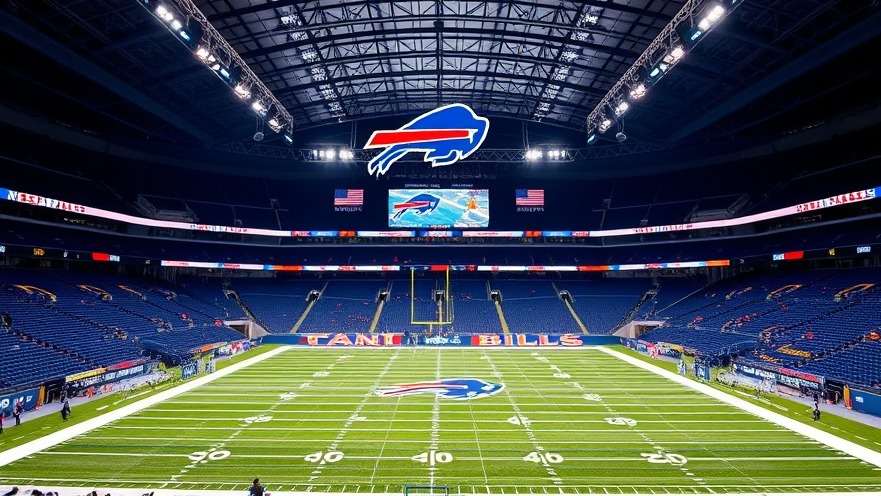
Designing a Modern Marvel: The New Highmark Stadium
The new construction of the Buffalo Bills' stadium, Highmark Stadium, is captivating not only football fans but also architects and urban planners alike. Managed by the renowned architecture firm Populous, the stadium is expected to change the landscape of sports facilities. It’s remarkable features, like the world’s largest snowmelt system, are designed not just for aesthetics but also for functionality, addressing specific climatic challenges faced by Buffalo, New York.
Innovation Meets Necessity: The Vision Behind the Stadium
The stadium's canopy, more than just an appealing architectural feature, is crafted to manage the heavy snowfall that Buffalo typically Endures. With an annual average snowfall of about 95 inches, this heated canopy not only enhances visibility during games but also ensures a comfortable experience for fans by actively melting snow off the seats and pathways. According to Jonathan Mallie, the managing director of Populous Americas, the system will automatically activate in response to snowfall, enabling timely and efficient snow management. This innovation addresses the practical need for safety and comfort without compromising aesthetic value.
A Unique Sound Experience
Beyond the structural benefits, the design also incorporates advanced acoustics. The canopy, made of structural steel and metal decking, is intentionally designed to amplify the sound of the crowd. This creates an electrifying atmosphere during games, intimidating opposing teams and providing home-field advantage. Mallie emphasizes the intention: "It will reverberate the crowd noise, intimidate the opposing team, and create an NFL gameday energy that will be second-to-none in the league." This melding of form and function highlights how modern stadiums are evolving to provide a richer experience for both players and spectators.
The Cultural Impact of the Highmark Stadium
Every community has its cultural touchstones, and sports stadiums often serve as central hubs for local identity and pride. Populous aims to create a structure that resonates with Buffalo’s unique heritage. The design takes cues from local venues like the Rockpile and other historical elements, ensuring that the new stadium becomes part of the city's cultural fabric. Despite initial social media comparisons of the stadium to a 'bed pan,' Mallie notes, "Public opinion will continue to evolve on the new stadium... its presence will transform both Buffalo and the NFL" once complete.
Future Trends in Stadium Design
The Highmark Stadium represents a broader trend in sports architecture towards multipurpose facilities that prioritize sustainability and fan experience. Several large sports venues, such as those being constructed for the Cleveland Browns and renovations to the Jacksonville Jaguars’ home, also exemplify this shift. They are designed not merely as sports arenas but as community spaces that can host a variety of events. As remote work becomes more prevalent, facilities like the Highmark Stadium could serve to engage communities and foster social connections through shared experiences.
Conclusion: Why the Buffalo Bills Stadum Matters
The Buffalo Bills' new stadium is more than a football arena; it is a representation of innovation, community, and future-forward design. With its striking canopy, advanced snow management system, and sound amplification, it complements the unique needs of Buffalo while enhancing the spectator experience. For remote workers and digital nomads, the evolution of spaces like this stadium serves as a reminder of the importance of designing environments that prioritize comfort, functionality, and community engagement.
As this new structure rises, it challenges us to think about how we can create our own workspaces that meet both practical needs and inspire connection with others. Whether through ergonomic design or innovative features, every workspace has the potential to enhance productivity and well-being.
 Add Row
Add Row  Add
Add 




Write A Comment